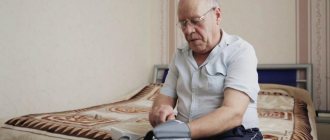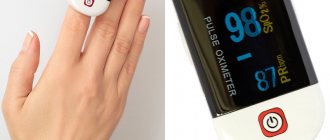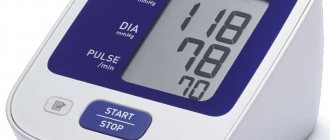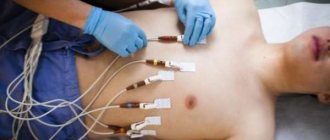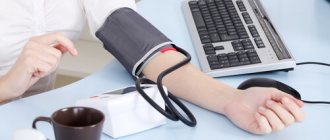A fingertip can give you valuable information about your health during a bout of Covid-19 or any respiratory illness. Medical professionals have noted that patients with Covid-19 can experience a potentially dangerous drop in oxygen saturation without obvious breathing problems. Without a pulse oximeter, they may never know or become accustomed to what they feel despite their very low oxygen levels. By the time they get to hospital with shortness of breath, their oxygen levels will have dropped significantly and they may have very advanced Covid pneumonia. The good news is that it is much easier to maintain oxygen levels that are just starting to drop than when levels have reached dangerously low levels.
Health officials are divided on whether home monitoring with pulse oximeters should be recommended on a widespread basis during Covid-19. Reliability studies show mixed results, and there is little guidance on how to choose between them. But many doctors advise patients to purchase one, making a pulse oximeter an indispensable gadget during a pandemic. Below are answers to common questions about the device, how it works, and what to do with the information it gives you.
How to choose a good pulse oximeter
Wednesday, November 3
2580
4.2
1
Content
- How to choose a pulse oximeter
- What saturation level is considered normal?
- When can a pulse oximeter be wrong?
- Top 10 good pulse oximeters
- Riester Ri-fox N
- ChoiceMMed MD300C21C
- Armed YX200
- Little Doctor MD300C23
- CS Medica MD300C2
- Aiqura AD-805
- CONTEC CMS 50DL
- TOPMED FP-30
- B.Well MED-320
- Smarterra O2
Before the coronavirus appeared in our lives, only a few people knew about such a device as a pulse oximeter. But now a pulse oximeter is as necessary a device in a home medicine cabinet as a thermometer or tonometer. We decided to figure out which pulse oximeter is better to choose.
A pulse oximeter is a small device that can be used to measure two indicators of the body's functioning: pulse and blood oxygen saturation level - saturation (SpO2). A sufficient level of oxygen (which is carried by hemoglobin) is the key to the proper functioning of all cells, organs and systems of the body. If there is a lack of oxygen in the body, a person will feel general weakness, loss of strength, dizziness, and a headache. Doctors usually use a pulse oximeter to determine how a person’s respiratory system works (is everything okay with gas exchange).
One of the complications of coronavirus is pneumonia and a decrease in oxygen levels in the blood, which is why it is so important to periodically monitor this indicator. Pulse oximeters are suitable for both hospital and home use, and measuring saturation is not difficult even for elderly people - everything is simple and clear.
To have or not to have?
We have been living for the second year in a coronavirus pandemic – a viral infection that affects the lungs and is extremely dangerous with severe complications. Having a pulse oximeter in your home medicine cabinet is, first of all, about taking care of yourself and your loved ones, the ability to recognize an impending threat in time and seek help.
People from high-risk groups must have a device for measuring saturation:
- elderly people over 65 years of age;
- patients with chronic diseases, and, in particular, pathologies of the cardiovascular and respiratory systems;
- people with immunodeficiency;
- cancer patients.
How to choose a pulse oximeter
No special skills are needed to measure blood oxygen. Another thing is the correctly selected device. After all, today there are a lot of pulse oximeters on the market at different prices.
The portable pulse oximeter is made in the form of a clothespin that is attached to your finger. How does a pulse oximeter work? At the top of the device there is a light source, and at the bottom there is a sensor for receiving the signal. As soon as you attach the “clothespin” and press the button, red and infrared waves begin to pass through your finger. Red waves are absorbed by deoxyhemoglobin (this is hemoglobin, which does not contain oxygen, infrared waves are absorbed by oxyhemoglobin (hemoglobin with oxygen). The device automatically calculates the ratio of these indicators and displays the level of oxygen in the blood on the screen.
Features of the device
The pulse oximeter passes light waves of different lengths through the tip of your finger (this is painless). The waves are “targeted” at hemoglobin, a protein molecule in the blood that carries oxygen through the vascular bed.
The device functions better on warm hands than on cold hands. And because oxygen levels can fluctuate, measurements need to be taken several times throughout the day. Measurements should also be taken in various conditions, for example, lying on your back or after walking.
What saturation level is considered normal?
In a healthy person, the oxygen level in the blood is 95-99%. But in people suffering from chronic lung diseases and heart failure, this figure can be 92-94%, which is normal in their situation. If during coronavirus the saturation drops to 92%, this is a reason to urgently call an ambulance. But doctors say that just measuring the level of oxygen in the blood is not enough: it is necessary to evaluate the clinical picture as a whole (body temperature, general well-being, auscultation of the lungs, individual characteristics of the body, etc.).
In addition to measuring saturation, a pulse oximeter also measures pulse. And if the device is used correctly, and the patient does not have problems with peripheral circulation, then the pulse oximeter readings can be trusted.
How does a pulse oximeter work?
Photos from open sources
Read also: 10 best drugs for influenza and ARVI The best drugs for the treatment of influenza and ARVI: reducing negative symptoms, antiviral and immunomodulatory.
Is there a risk of not properly monitoring oxygen levels at home?
It is possible that home monitoring may give incorrect readings or be used incorrectly, leading the patient to seek help unnecessarily. If you or someone in your home is diagnosed with very low readings, you can test your device on a healthy person to make sure it is working properly and discuss this with your doctor. And home monitoring shouldn't lull you into a false sense of security. Don't ignore physical symptoms, even if your oxygen levels are normal. You should still call your doctor if you have severe shortness of breath, fever, confusion, or any other symptom. The benefit of monitoring is that it can potentially detect deteriorating airway health before you even notice it.
When can a pulse oximeter be wrong?
A pulse oximeter may give an error when measuring saturation in the following cases:
- Measurement in the cold,
not in a warm room. In the cold, blood circulation decreases (including the fingers). - Dirty hands.
Incorrect saturation readings are possible if your hands are very dirty or there is polish in the cream or on your nails. - Dirty pulse oximeter.
If there is dirt on the light sensor, the device may show underestimated saturation numbers. Therefore, be sure to clean the sensors before taking measurements. - The batteries of the device are low.
The pulse oximeter can produce low oxygen numbers if its batteries run out. - Smoking.
Since nicotine constricts peripheral blood vessels, blood circulation in the extremities of smokers is impaired - this causes an error in measuring saturation. - Alcohol.
If the patient has alcohol in his blood, the pulse oximeter may also give an incorrect result because blood circulation is impaired. - Old age of the patient.
Older people usually have chronic diseases that impair peripheral circulation. - Physical exercise.
If you check your saturation immediately after physical activity, it may be low. - Thick mask on the face.
If a person is wearing a respirator or a mask with poor air flow, the device may also show low oxygen levels. - The hand is raised up.
To avoid measurement errors, the hand must lie on the surface. If the patient is lying down, the hand should be on the chest.
To get more accurate oxygen saturation readings, doctors recommend measuring oxygen twice: once, and then again, a few minutes later.
There are many Chinese pulse oximeters on the market without certificates - such options are not suitable for professional use. They can only be purchased for home oxygen level measurements. A good device must have a Russified certificate.
How to measure saturation correctly
Measuring saturation at home is quite simple. To do this, place your finger in the clamp or sleeve of the pulse oximeter. It is important that the device does not dangle, but is well fixed on the finger. After pressing the button on the instrument panel, the result appears on the screen after 15 - 30 seconds.
Important! Measurement results may be incorrect or completely absent if:
- The device dangles freely on your finger and slides off it. As practice shows, it is best to take measurements on the index, middle or ring fingers. In this case, it is desirable that the nails are cut short. Sometimes the length of the nails does not allow the pulse oximeter to be firmly fixed on the finger, which is why the readings may be distorted.
- The device is not secured correctly . The fingertip is an ideal place to measure peripheral saturation, and the readings here are most reliable for interpreting the absence or presence of hypoxia (oxygen starvation). In some cases, if it is impossible to measure saturation on the fingers, it is permissible to attach the pulse oximeter to the earlobe or toe (mainly in newborns).
- The nails are coated with varnish or gel polish . Since the operating principle of a pulse oximeter is based on shining the fingertip with infrared light and reading the results obtained with a special sensor, the coating on the nails makes this process difficult. And coating with gel polish makes it completely impossible. The stream of infrared rays simply “does not penetrate” a fashionable manicure. Therefore, to obtain reliable results, nails must be clean and uncoated, preferably of any kind.
- The device was purchased without documents confirming its reliability and safety..
Riester Ri-fox N
Compact and easy-to-use pulse oximeter with a large, bright screen (ideal for older people with poor vision or poor lighting). Riester Ri-fox N starts working as soon as you put it on your finger. As soon as you remove it, the device turns off. This is a great way to save battery power (continuous operation time on new batteries is about 35 hours). An important plus is the shock-resistant case of the pulse oximeter, which can withstand a fall from a 3-meter height. The Riester Ri-fox N size is larger than other devices, its price is higher, and it is not suitable for children. The pulse oximeter has a built-in pulse measurement sensor and is distinguished by the accuracy of saturation measurement.
Riester Ri-fox N
The Ri-Fox N portable pulse oximeter has a compact size, low energy consumption and is easy to use. The patient just needs to put his finger into the photoelectric sensor to carry out diagnostics and get the blood oxygen saturation parameter on the display. Clinical trials have also shown that the device has high accuracy and reproducibility of results.
19
- Like
- Write a review
Does it matter which finger I use?
Most healthcare workers place the device on their index fingers, but a study of 37 volunteers found that the most accurate readings came from the middle finger of their dominant hand. In second place is the dominant thumb. So, if you are right-handed, use the middle finger of your right hand. If you are left-handed, use the middle finger of your left hand. There is little difference between the fingers, so if you prefer the index finger, that's okay. Pro Tip: Dark nail polish can affect the accuracy of the reading. Very long nails make it difficult to insert your finger into the clamp correctly. It is advisable to use the device without a manicure.
ChoiceMMed MD300C21C
This pulse oximeter, although compact, has a large display and large font (convenient for people with low vision). The device is turned on with a button on the body. It is convenient to use the ChoiceMMed MD300C21C in any lighting because it has 10 brightness levels. To save battery power, the device is equipped with an automatic shutdown when not in use. The pulse oximeter is easy to use and has an optimal price/quality ratio. The only negative of the ChoiceMMed MD300C21C is a slight error in measurements.
ChoiceMMed MD300C21C
The finger pulse oximeter features small size, low power consumption, ease of use and portability. For diagnosis, the patient only needs to place one of his fingers into the photoelectric sensor, and the measured value of hemoglobin oxygen saturation will be directly shown on the display screen. Clinical experiments reveal a fairly high accuracy of measurements.
17
- Like
- Write a review
Where can I buy
We offer to order pulse oximeters with a registration certificate at an affordable price. All devices comply with a set of registration documentation in accordance with the established requirements of the Federal Service for Social Development and Health. You should first consult your doctor. If you need to carry out the diagnosis once, then it would be more advisable to go to the clinic.
The cost of pulse oximeters for medical purposes depends on the model and averages $20-30. Luxury class devices cost 2-3 times more. They are distinguished by the presence of removable sensors, built-in memory and an alert signal. The service life of the device, if the recommendations for use are followed, is at least 5 years. Each pulse oximeter comes with a 1 year warranty.
Armed YX200
This device has a large display, so people with poor vision will appreciate it, as well as a charge indicator. But there is also a relative disadvantage - the Armed YX200 does not have a display backlight, so you won’t be able to use this pulse oximeter in the dark. Among the disadvantages is the long switching time. The device is great for traveling because it is as compact as possible. The pulse oximeter is controlled with one button, and if it is not used for 8 seconds, it automatically turns off, thus saving battery. And thanks to its large measurement range, the device is highly accurate.
Armed YX200
Armed YX200 medical pulse oximeter is one of the most affordable and easy-to-use pulse oximeters.
The device allows you to press one button to obtain data on the concentration of oxygen in the blood, pulse rate (with the ability to generate a graph). from 336
5.0 1 review
84
- Like
- Write a review
Symptoms of low blood oxygen
Photos from open sources
What types of pulse oximeters are there?
. A device of this type is installed in operating rooms and in anesthesiology and intensive care departments.
Stationary- Belt . A portable device that attaches to your belt. Intended for patients with chronic lung diseases.
- Wrist . Designed for athletes to monitor oxygen levels during training.
- Fingers . They are worn on the finger and are intended for use on an outpatient basis, as well as in a home where there are seriously ill people (for example, after a stroke, so as not to miss the onset of pneumonia).
- Sleep monitors . Used in hospitals, hospices, and at home. Designed to control breathing problems during sleep (for example, if there is a patient with undine syndrome).
Little Doctor MD300C23
This pulse oximeter can measure saturation in both adults and children. The device has a small but clear color display, the brightness of which can be adjusted. An audible signal notifies you when oxygen measurement begins and ends. The batteries last approximately 30 hours for the Little Doctor MD300C23. This pulse oximeter takes a long time to measure saturation, and its readings on the right and left hands may differ. However, the device is very easy to use and has received positive reviews from patients.
Little Doctor MD300C23
Little Doctor, Singapore
Little Doctor MD300C23 medical finger pulse oximeter is designed for continuous non-invasive measurement of the degree of oxygen saturation of hemoglobin in arterial blood (saturation) and pulse rate.
Saturation (oxygen saturation) is the percentage ratio of the amount of oxygen-bound hemoglobin (HbO2) to the total amount of hemoglobin (Hb) in the blood. Many respiratory diseases can lead to a decrease in oxygen saturation in a person's blood. from 285
5.0 1 review
55
- Like
- Write a review
Read also How to treat dry cough: top 5 drugs The best drugs for dry cough in adults.
Pulse oximeters recommended by the Ministry of Health
Equipment approved for sale through pharmacies and medical equipment undergoes a state procedure - registration. Testing confirms the quality, safety, and effectiveness of products. The registration certificate issued by the ministry is documentation confirming that the equipment meets the established requirements.
You can check the availability of each of the proposed samples in the Ministry of Health register on the official website of the institution. Registration of medical products in Russia is carried out by the Federal Service for Surveillance in Healthcare (Roszdravnadzor).
Equipment that is not included in the register does not belong to medical devices and cannot be used in medical institutions. It has a decorative function, and the manufacturer is not responsible for health problems that arise in patients due to erroneous sensor readings.
CS Medica MD300C2
A small and compact device, ideal for carrying with you all the time, it measures saturation as accurately as possible. The numbers on the screen are displayed in large font, and there is a charging indicator. The screen brightness of the CS Medica MD300C2 is adjustable, you can measure oxygen even in the dark - everything will be visible. You can control the pulse oximeter with just one button, and the battery life is about 30 hours. The disadvantages are the high price and long measurement time.
CS Medica MD300C2
Pulse oximeter, with finger sensor, CS Medica MD300C2 can be used to determine the oxygen saturation of human hemoglobin and heart rate.
from 168
5.0 1 review
41
- Like
- Write a review
Aiqura AD-805
The device is small, inexpensive, and easy to use. The pulse oximeter has a large display with a clear image. You can choose any of ten brightness modes, so you can see the saturation numbers even in the dark. The batteries last for 15 hours of operation of the CS Medica MD300C2, and automatic shutdown after 8 seconds of inactivity allows you to save power. The finger indentation is made of hypoallergenic rubber. Among the disadvantages are the lack of batteries included and small errors in saturation measurements.
Aiqura AD-805
The Aiqura AD805 pulse oximeter is a compact smart device that measures two very important indicators: pulse and SpO2, i.e. blood oxygen level. These parameters of the respiratory and circulatory systems are of great importance for the diagnosis and timely treatment of many diseases. The Aiqura AD805 pulse oximeter is convenient for use in the doctor's office and for home use: in fact, doctors now insist that every family absolutely needs to have such a device at home. It is very small in size, consumes a minimal amount of electricity and is very easy to use. When the finger is in the clamp of the device, the photoelectric sensor is triggered and blood oxygen saturation indicators are displayed on the display.
10
- Like
- Write a review
UPD: inexpensive pulse oximeters
DEAR READERS, FOR THE COOLEST SALE FROM ALIEXPRESS ON 11.11.2021 WE HAVE PREPARED A PROMOTION FOR THE BEST CHEAP PULSE OXIMETERS. Just click on this ad
Perhaps the devices listed above seemed a little expensive to you, then we offer you a cheaper alternative. Please note that this is a purchase at your own risk. Here are some interesting options.
Pulse Oximeter
A miracle of Chinese production, which is actively sold on Aliexpress for 500 rubles ($6.5), and in domestic online stores - from 900 rubles (almost $12). We can’t find any information about the brand or the model name, so for us it will remain just Pulse Oximeter. It shows pulse, saturation and pulse wave, turns off after 8 seconds of inactivity. There is a sound indication for low saturation and arrhythmia. Powered by two AAA batteries, not included, but the product comes with a strap. This is surprising, but hundreds of reviews say that the device does its job well and gives accurate measurements if all instructions are followed.
You can find it on the sites due to its low price and appearance. It is almost exactly the same as the CONTEC CMS 50D we mentioned above, only it comes in a different box without the brand name. It turns out that this is a Chinese replica, since even on Aliexpress the CONTEC CMS 50D costs at least 2,300 rubles ($30). Cheap and cheerful. If you decide to, you can buy it here.
Attention to the packaging and its difference from CONTEC CMS 50D
ARSTN Oximeter M170A
Another example of a popular device from Aliexpress. If you believe the reviews, this pulse oximeter is quite functional and, most importantly, accurate. Users note that they checked the readings with devices in clinics, and the result was the same. This model has several brightness levels, sound notification, and collects statistics. It is powered by two batteries and comes with a solid case. Cost – 1080 rubles (about $14).
You can view the model here. The page also presents other models of the manufacturer; there are also cheaper ones, without sound alerts and with an LED screen. Judging by the reviews, all are accurate, but be careful when purchasing - do not confuse the models.
YK-82C
Nice device with a bright display. The user is given the opportunity to assign the minimum and maximum permissible values of heart rate and saturation, and outside this range, sound and light indications will be triggered. There are several information output modes. The kit includes a case and lanyard, no batteries. The reviews are very good. Price – 800 rubles (a little more than $10). You can order here.
CONTEC CMS 50DL
This pulse oximeter has a built-in oxygen sensor and digital display. You can easily measure saturation even in poor lighting. CONTEC CMS 50DL is equipped with a sound signal, which is very convenient. The batteries last for 24 hours of continuous operation. The pulse oximeter automatically turns off after 8 seconds of inactivity. CONTEC CMS 50DL has an affordable price and is easy to use. Among the disadvantages are sometimes different saturation indicators on the right and left hands, as well as a long period of measurement itself.
CONTEC CMS 50DL
The portable device CMS50DL is designed to determine the amount of oxygen contained in capillary blood. The device is equipped with an LED display, which ensures low power consumption and, as a result, the ability to monitor the patient’s condition for a long period of time. And the compact size, light weight and high accuracy of the results obtained allow this device to be used in almost any conditions.
14
- Like
- Write a review
Benefits of a pulse oximeter during the COVID-19 pandemic:
- Keeps your health under control. Thanks to the device, you will not miss the first signs of deterioration in health and will be able to consult a doctor in time.
- Helps avoid panic. Seeing on the device screen that the indicators are normal, you will have no reason to worry, which will ultimately have a positive effect on your immunity.
- Provides timely treatment. If you have a coronavirus infection, you should know how oxygenated the blood is and whether there is a need to hospitalize the patient.
TOPMED FP-30
This pulse oximeter measures the oxygen in the blood of both adults and children. TOPMED FP-30 has the most accurate measurement, a large two-color screen, and large font. You can use the device even in the dark thanks to the backlight. Among the relative disadvantages of the pulse oximeter is that its weight is slightly larger than similar analogues, as well as its price.
TOPMED FP-30
TOPMED pulse oximeters are ideal for quickly determining saturation and heart rate. Can be used at home, in ambulance services, therapeutic departments and during screening examinations to monitor the condition of patients with severe respiratory diseases.
13
- Like
- Write a review
Pulse oximeters with tonometer two in one, which one to choose
The equipment is divided into two main subtypes:
- for sports purposes – used during training, allows you to control heart rate and determine the intensity of exercise;
- medical - used for patients with a certain type of disease, blood oxygen levels and pulse are measured.
Modern models of pulse oximeters additionally monitor changes in blood pressure levels. Most products are made in the form of fitness bracelets. They are not medical devices, but only monitor indicators. Measurement results may have slight errors. When choosing suitable equipment, you need to pay attention to the availability of:
- pedometer – necessary for counting steps and assessing the total load;
- accelerometer - used to calculate movement speed and position in space;
- tonometer – measures blood pressure with an error of up to 10% (if you need accurate information, it is better to use medical devices);
- heart rate monitor – calculates heart rate at rest and during exercise.
Most fitness bracelets have a built-in function for determining the oxygen content in the blood, some have “SOS” functionality for sending a request for help to relatives or emergency responders. It is better to purchase such devices in specialized medical equipment stores; when purchasing, you need to make sure that the kit comes with instructions for use in Russian.
B.Well MED-320
B.Well MED-320 has compact dimensions, so it is convenient to take it with you on the road. It is possible to adjust the brightness of the display depending on the light intensity, although some users note that the display is not bright enough. You can control the pulse oximeter with one button; the device turns off after five seconds of inactivity, which saves battery power. B.Well MED-320 is made of very high quality, it quickly measures saturation, and is easy to use. Among the disadvantages is that sometimes there is inaccuracy of measurement.
B.Well MED-320
B.Well, Switzerland
The B.Well MED-320 pulse oximeter is a device designed for non-invasive measurement of the degree of oxygen saturation of arterial hemoglobin (SpO2), as well as pulse rate.
Suitable for use at home. The device is not intended for continuous monitoring. from 124
5.0 1 review
33
- Like
- Write a review
Smarterra O2
This pulse oximeter model is very compact, light weight, and has a large single-color screen. It takes about 20 seconds to measure the oxygen level in your blood. There is a charging indicator on the screen, so the device will not go out at the most inopportune moment. Smarterra O2 can be put in your pocket or worn on your belt and has very accurate saturation readings. Among the disadvantages are poor quality assembly, high price, and no batteries included.
Smarterra O2
The Smarterra O2 pulse oximeter is based on fully digital photoplethysmogram technology and is designed for non-invasive point measurement of the functional oxygen saturation of arterial hemoglobin (Sp02). An improved algorithm improves measurement accuracy. A pulse oximeter can be used to measure blood oxygen saturation and heart rate through a finger. The product is suitable for use at home. To begin use, install two AAA batteries into the battery compartment located on the back of the device. Observe the correct polarity of the batteries and close it with the cap.
9
- Like
- Write a review
How accurate are home devices?
Most healthcare professionals agree that, when used correctly, consumer models are very reliable. Experts advise sticking to finger clipping technology for now. New wearables and camera-based apps use different technology to measure oxygen saturation, and so far most of these products are unreliable. A 2021 study published in the American Journal of Emergency Medicine tested three iPhone apps that offered pulse oximetry functionality, but all fell short. The authors concluded that the apps were inaccurate and lacked the ability to accurately detect hypoxia. Thus, it is recommended to use exclusively certified and approved by doctors devices.
